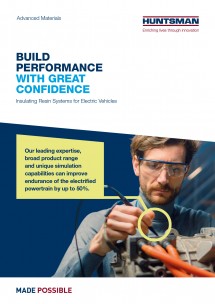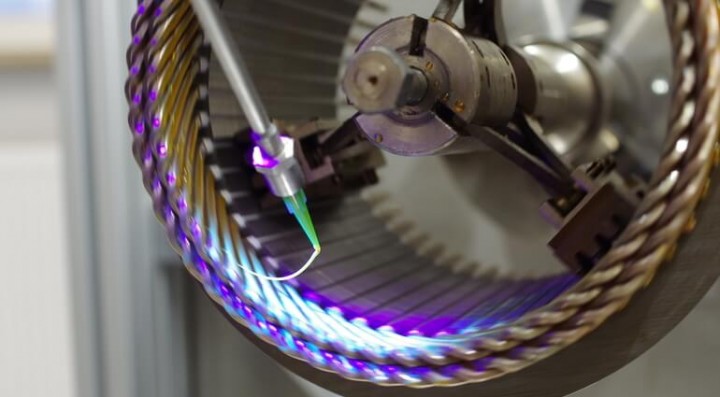In the Trickling Process, the stator is pre-heated to 100° C, and attached to a continuously rotating mandrel. Resin is trickled on the stator winding heads through nozzles at different positions and penetrates the windings by capillary action. This ensures good impregnation of windings in order to deliver reliable electrical insulation, high bond strength and excellent chemical and mechanical protection. After trickling, the stator is cured at 170-180° C for 20-40 minutes.
This process allows mass production with high productivity, as there is no need for material pre-treatment, and no loss of impregnating resin. The process is simple to manage, as there is only one component material —a VOC-free epoxy resin— and the curing cycle, which is needed in order to reach the final properties of the resin, is short.
A related process is Dipping Impregnation, which can be either simple dipping or roll dipping. In the roll dip impregnation process, the impregnating resin is contained in one or more temperature regulated bath, and kept constantly flowing by means of pumps. The bath automatically rises on the rotating stator or rotor, so that it will be dipped up to a specific level. The amount of resin penetration though the windings is controlled by adjusting three parameters: time, rotation speed and dipping level. The process is completed with gelation and curing of the resin.
Huntsman’s automotive products have been developed over many years of leadership in the global electrical insulation sector. We continuously study and update our materials in order to deliver the shortest possible curing cycles and meet the most challenging productivity targets.
Huntsman technical support is available to guide customers through the setup phase of all processing parameters. We offer a training program aimed at understanding both insulating materials and processing technologies, including production of sample parts by simulation of casting processes.



